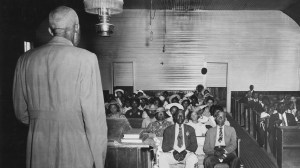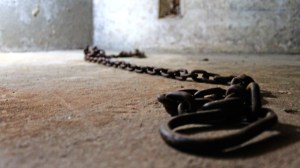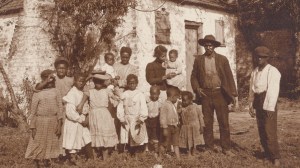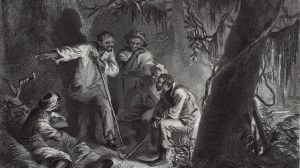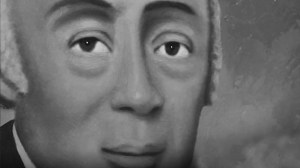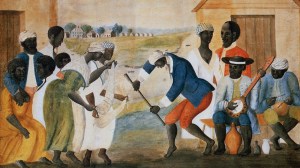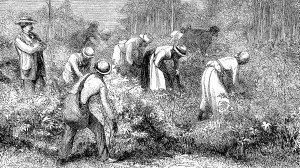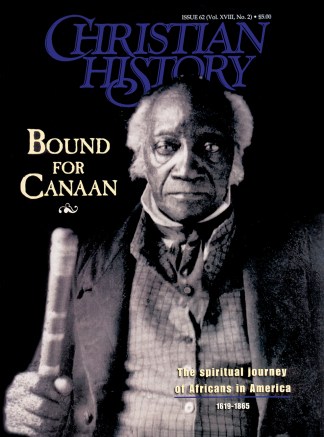In this series

In 1831, a Kentucky slave named Tice Davids made a break for the free state of Ohio by swimming across the Ohio River. His master trailed close behind and watched Davids wade ashore. When he looked again, Davids was nowhere to be found. Davids's master returned to Kentucky in a rage, exclaiming to his friends that Davids "must have gone off on an underground road." The name stuck, and the legend of the Underground Railroad was born.
There were no tracks on the Underground Railroad, or even any designated routes. Neither did anyone hide or travel underground. The Underground Railroad was simply a loose network of free blacks and whites in the North who helped an estimated 40,000 to 100,000 fugitive slaves find freedom in the northern United States and Canada.
Some individuals helped by offering fugitive slaves a place to hide for a day or two, others provided money for their travel to Canada, and a small number even went south to personally lead slaves to freedom.
The task of helping fugitive slaves was not an easy one. Those known to be involved in the Underground Railroad—and it was often not a secret—were criticized in popular books and newspapers in both the North and South. Neighbors spied on their activities, and slave owners and slave catchers kept their houses and businesses under almost constant watch. Some were asked to leave their churches, and their children were often harassed in school. Others, fearing for their lives, left their homes and moved to other states.
Still they remained, driven by their Christian faith and the conviction that "all men are created equal" (at a time when it was far from "self-evident"). When a fugitive slave came into their area, these "conductors" on the Underground Railroad acted quickly to usher him inside and into a safe hiding place.
Free black communities, especially the churches, were active in this work. Depending on the situation, the slave was offered a meal, money, a disguise, and help in finding the next safe haven as he journeyed north. Many slaves found a new home among the large free black communities of Philadelphia, Buffalo, Detroit, and Cincinnati; others found homes in Canada. Some slaves began new lives as domestic servants, mechanics, and field laborers, but many did not have any marketable skills and found life in the North very difficult.
'Moses' of Her People
The most celebrated leader in the Underground Railroad was ex-slave Harriet Tubman, who had escaped from the Eastern Shore of Maryland in 1849. When she first reached the North, she said later, "I looked at my hands to see if I was de same person now I was free. Dere was such a glory ober eberything, de sun came like gold through de trees and ober de fields, and I felt like I was heaven."
Tubman was not satisfied with her own escape to freedom, however. She made 19 return trips to the South and helped deliver at least 300 fellow slaves to freedom, boasting "I never lost a passenger." Her guidance of so many to freedom earned her the appellation Moses.
Tubman's friends and fellow abolitionists claimed that the source of her strength came from her faith in God as deliverer and protector of the weak. "I always tole God," she said, " 'I'm gwince [going] to hole stiddy on you, an' you've got to see me through.'"
Though infuriated slaveholders posted a $40,000 reward for her capture, she was never apprehended. "I can't die but once" became her motto, and with that philosophy she went about her work of deliverance.
She always made her rescue attempts in winter but avoided actually going into plantations. Instead she waited for escaping slaves (to whom she had sent messages) to meet her eight or ten miles away. Slaves would leave plantations on Saturday nights so that they wouldn't be missed until Monday morning, after the Sabbath. It would thus often be late on Monday afternoon before their owners would discover their slaves were missing. Only then did they post their reward signs—signs men hired by Tubman would take down.
Because her rescue missions were fraught with danger, Tubman demanded strict obedience from those she helped. A fugitive slave who returned to his master would likely be forced to reveal information that would compromise her mission. If a slave wanted to quit in the midst of a rescue, Tubman would hold a revolver to his head and ask him to reconsider.
Asked whether she would actually kill a reluctant escapee, she replied, "Yes, if he was weak enough to give out, he'd be weak enough to betray us all and all who had helped us, and do you think I'd let so many die just for one coward man?"
She never had to shoot any slave she helped, but she did come closewith one: "I told the boys to get their guns ready, and shoot him. They'd have done it in a minute; but when he heard that, he jumped right up and went on as well as any body."
Tubman said she would listen carefully to the voice of God as she led slaves north, and she would only go where she felt God was leading her. Fellow abolitionist Thomas Garrett said of her, "I never met any person of any color who had more confidence in the voice of God."
Apart from Tubman's work, history has often understated the role of blacks in the Underground Railroad. White abolitionists provided the safety and resources necessary for many flights to freedom, but blacks often took far more risks in directly freeing slaves. The bravest of all, however, were those slaves who finally decided to escape from captivity and board the Underground Railroad.
Matt Donnelly is assistant editor of Computing Today. He received a Master of Theology degree from Gordon-Conwell Theological Seminary.
Copyright © 1999 by the author or Christianity Today/Christian History Magazine. Click here for reprint information on Christian History.


